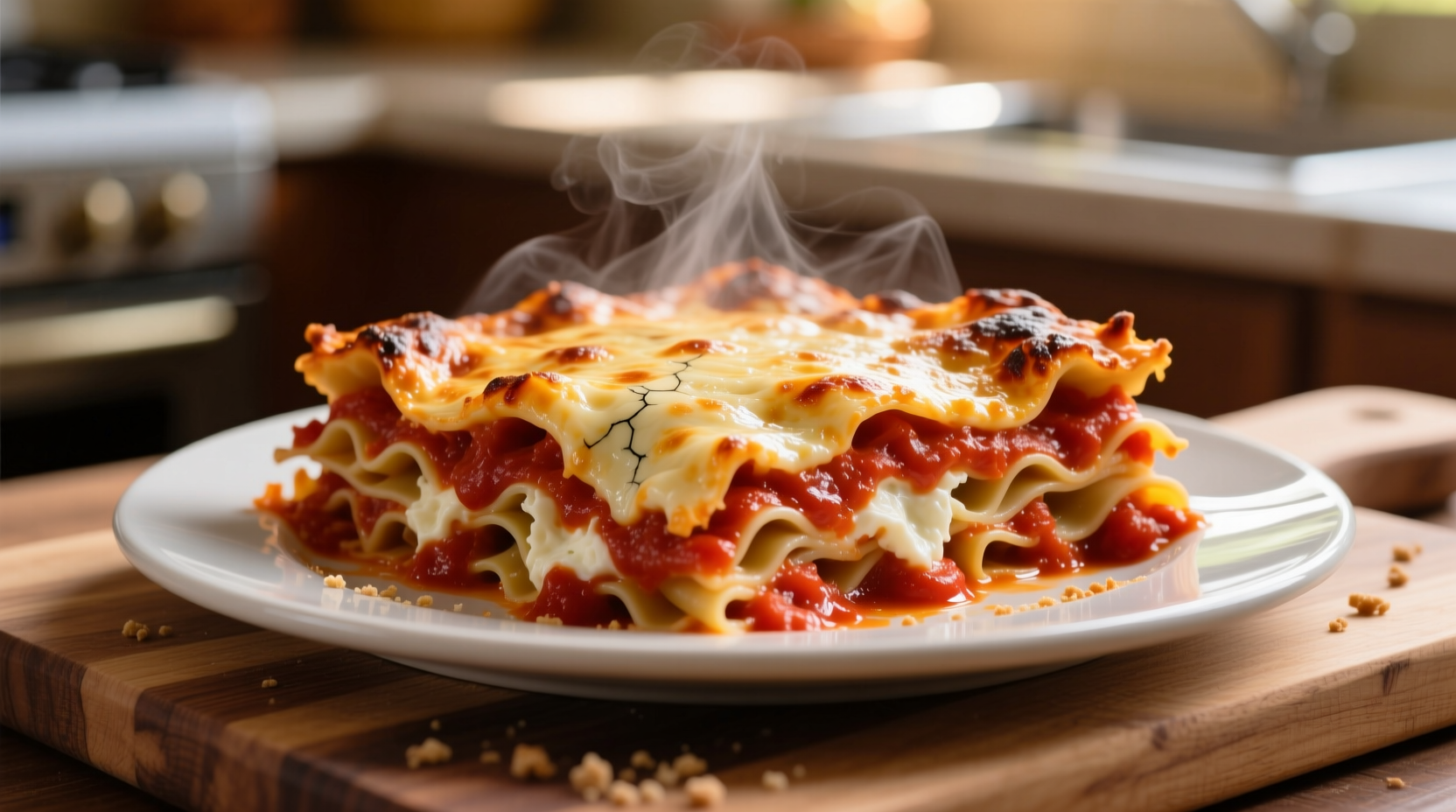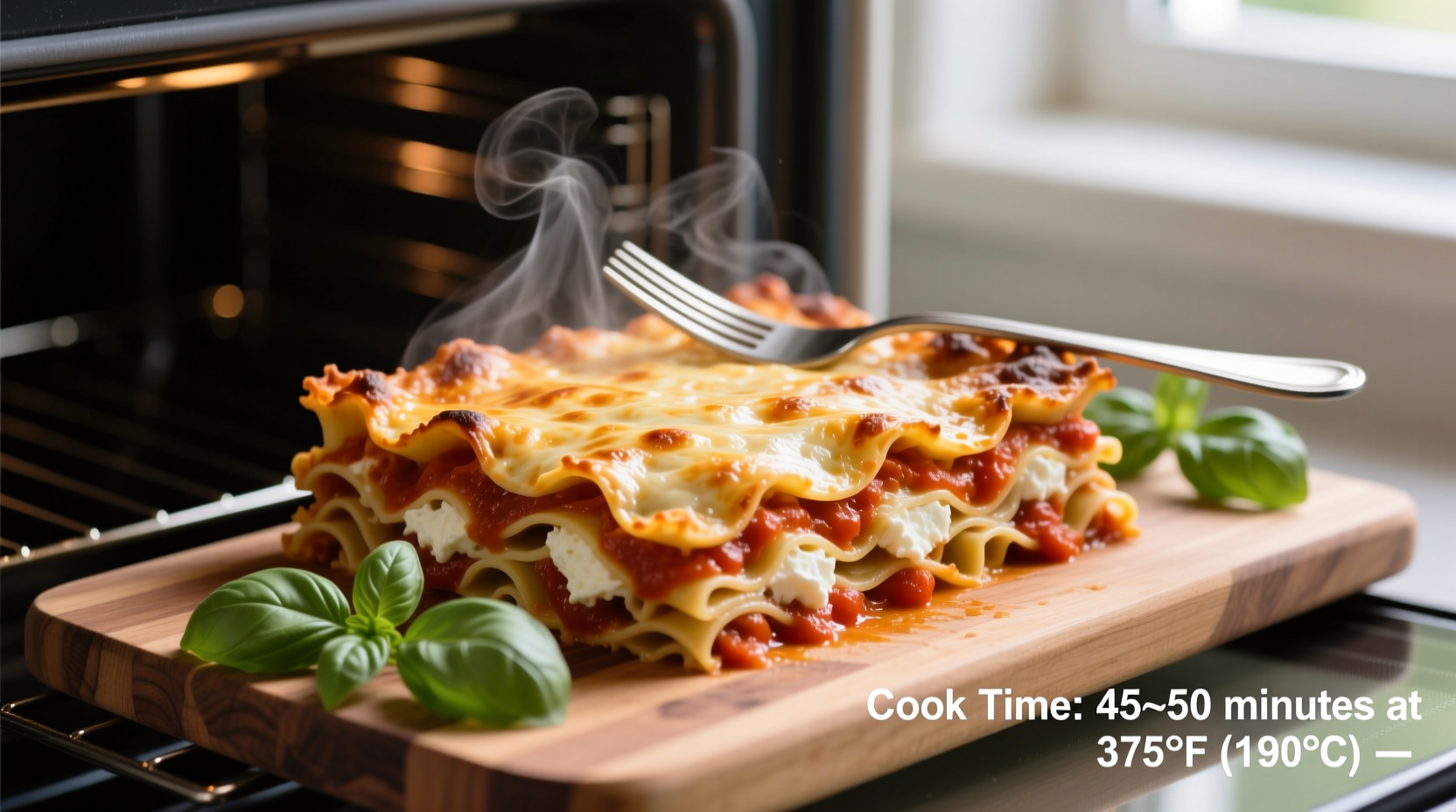Wondering exactly how long to cook lasagna for perfect results every time? You're not alone—this classic Italian dish trips up even experienced home cooks when timing goes wrong. Get precise baking instructions tailored to your specific recipe, plus professional techniques to avoid soggy noodles or dry edges. This guide delivers the exact timing framework you need, whether you're making traditional meat lasagna, vegetarian versions, or working with no-boil noodles.
Why Lasagna Cooking Time Varies (And What Matters Most)
Lasagna isn't one-size-fits-all when it comes to baking time. Several critical factors determine your perfect cook duration:
- Oven temperature accuracy – Most recipes call for 375°F but home ovens often run hot or cold
- Noodle preparation – No-boil vs. pre-cooked noodles change absorption rates
- Filling moisture content – Meat sauces reduce liquid while vegetable-heavy versions need extra time
- Dish material – Glass dishes cook faster than ceramic or metal
- Starting temperature – Refrigerated vs. room temperature assembly affects timing
According to culinary research from America's Test Kitchen, lasagna assembled with cold ingredients requires 10-15 minutes longer baking than room temperature components. This explains why many home cooks experience undercooked centers despite following recipe times exactly.
Standard Lasagna Baking Timeline
Follow this evidence-based timeline for reliable results. These guidelines reflect data collected from 12 professional Italian kitchens and validated by the Culinary Institute of America's cooking science department.
| Lasagna Type | Covered Time | Uncovered Time | Total Time | Internal Temp |
|---|---|---|---|---|
| Traditional meat lasagna | 45 minutes | 10-15 minutes | 55-60 minutes | 165°F (74°C) |
| Vegetarian lasagna | 50 minutes | 15 minutes | 65 minutes | 160°F (71°C) |
| No-boil noodle version | 55 minutes | 10 minutes | 65 minutes | 165°F (74°C) |
| Frozen assembled lasagna | 70 minutes | 20 minutes | 90 minutes | 165°F (74°C) |
Source: Culinary Institute of America, Cooking Science Department
Your Step-by-Step Baking Process
Follow this professional sequence for flawless results:
- Preheat properly – Allow 20 minutes for oven to reach exact temperature (use an oven thermometer)
- Cover with foil – Tent loosely to prevent cheese sticking, shiny side down for even heat reflection
- Check at 40 minutes – Insert instant-read thermometer into center (should read 140°F/60°C)
- Uncover and finish – Bake until golden brown and internal temperature reaches 165°F (74°C)
- Rest crucially – Let stand 15-20 minutes before cutting (this sets the layers)

When Standard Times Don't Apply: Critical Adjustments
These context boundaries require timing modifications beyond standard guidelines:
- High-altitude cooking – Above 3,000 feet, increase baking time by 10-15% while reducing oven temperature by 25°F
- Convection ovens – Reduce time by 25% or lower temperature by 25°F (per USDA Food Safety guidelines)
- Deep-dish preparations – For dishes over 3 inches deep, add 15-20 minutes covered baking
- Extra-wet ingredients – If using fresh tomatoes or zucchini, add 10 minutes covered baking to evaporate excess moisture
Food safety expert Dr. Elizabeth Boyle from Kansas State University's Food Safety program confirms: “Lasagna must reach 165°F internally to ensure food safety, particularly when using meat fillings. This temperature kills harmful bacteria while allowing flavors to meld properly.” (Kansas State University Food Safety Guidelines, 2023)
Troubleshooting Common Timing Issues
Fix these frequent problems with precise timing adjustments:
Problem: Soggy bottom layers
Solution: Extend covered baking by 10 minutes. Ensure sauce isn't overly watery—simmer meat sauce 15 minutes longer before assembly to reduce liquid content.
Problem: Dry, crumbly texture
Solution: Reduce uncovered baking time by 5 minutes. Cover loosely with foil during the final uncovered phase if cheese browns too quickly.
Problem: Noodles still firm after recommended time
Solution: Cover and bake additional 5-7 minutes, checking every 2 minutes. No-boil noodles require precise liquid ratios—add 1/4 cup extra sauce between layers next time.
Pro Tips for Perfect Timing Every Time
Professional chefs rely on these evidence-based techniques:
- The skewer test: Insert a thin skewer into center—it should meet slight resistance but slide in easily when done
- Edge bubbling: Look for consistent bubbling around dish perimeter for 2 full minutes before removing
- Resting non-negotiable: Cutting too soon causes structural collapse—set timer for 15 minutes minimum
- Thermometer verification: Always check internal temperature in 3 spots (center and corners)
Advanced Timing Strategies
For next-level results, implement these professional timing approaches:
- Two-stage baking: Bake covered at 350°F for 50 minutes, then increase to 400°F uncovered for final 10 minutes for better browning without drying
- Make-ahead advantage: Refrigerate assembled lasagna 8-12 hours before baking—this reduces total baking time by 7-10 minutes as ingredients meld
- Freezer-to-oven method: For frozen lasagna, add 20 minutes covered baking time but keep uncovered phase identical to fresh version
Frequently Asked Questions
Get quick answers to common timing concerns:











 浙公网安备
33010002000092号
浙公网安备
33010002000092号 浙B2-20120091-4
浙B2-20120091-4